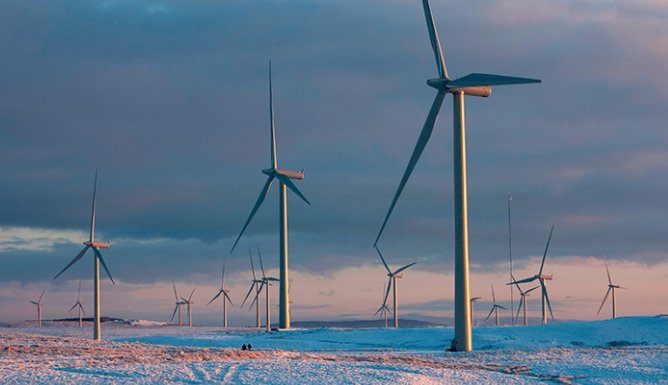White turbines rise like ghostly sentinels over the waves of the North Sea, blades silently spinning in Scotland’s stiff maritime breeze. From the deck of a fishing boat or the shores of East Lothian, these structures may appear graceful — even elegant. But behind them, a fierce debate is playing out.
Do we really need more?
That’s the question increasingly being asked by campaigners, local residents, and some conservationists as Scotland forges ahead with what may become one of the most expansive offshore wind programs in the world. Critics argue the country already produces far more electricity than it consumes — and that it’s being disproportionately burdened with developments designed to power not just Scotland, but the rest of the UK.
Scotland: Already a Renewable Powerhouse
Scotland’s renewable energy achievements are impressive. In 2023, 113% of Scotland’s electricity demand was met by renewable sources on paper, thanks largely to wind. A significant portion of this came from onshore wind farms, but offshore capacity is growing fast, especially through initiatives like ScotWind — which auctioned vast seabed areas for wind development in 2022.
Today, Scotland exports a third of its electricity to England and beyond.
According to National Grid ESO, much of the additional power generated by upcoming offshore wind farms won’t even be used in Scotland. Instead, it will be transmitted southwards via new undersea cables and converter stations — billion-pound infrastructure projects currently under construction or on the drawing board.

Campaigners Push Back
Some community groups and anti-wind farm campaigners argue that the expansion has gone too far, too fast. They claim:
-
Scotland is being “sacrificed” to meet UK-wide net zero targets.
-
Environmental impacts on marine life and bird migration routes haven’t been fully addressed.
-
Energy transmission bottlenecks mean new capacity may not be used efficiently.
A recent protest against the Ben Akett onshore wind development in the Highlands saw dozens of locals and environmentalists unite under a single banner: “No more turbines.” The same sentiment is echoed in coastal communities now facing the prospect of massive offshore infrastructure within sight of their shores.
“It feels like we’re shouldering the burden for the whole of the UK,” says Mary MacKenzie, a retired teacher from Caithness. “These turbines aren’t for us. They’re for cities down south — and they’re changing our seascapes forever.”
The Case for Offshore Wind
But the case for expanding offshore wind remains strong — and backed by both government and many climate scientists.
Net zero targets, legally binding for both Scotland (by 2045) and the UK (by 2050), require deep decarbonisation of electricity, heat, transport, and industry. That means more clean power — and lots of it.
“Even with current capacity, we’re only scratching the surface,” says Professor Janice Kerr, an energy policy expert at the University of Strathclyde. “Once you factor in the electrification of heat and vehicles, we’ll need two to three times the electricity we use today. Offshore wind is the only scalable solution that can deliver this.”
Supporters also point to energy security and economic opportunity. Amid global energy instability — driven by wars, fossil fuel volatility, and climate impacts — building more domestic renewable capacity could insulate the UK from future shocks.
Then there’s the jobs argument. The ScotWind leasing round alone is expected to generate up to 28,000 jobs and £25 billion of investment over the coming decades. Port upgrades are already underway in Aberdeen, Montrose, and Nigg to accommodate this surge.
Ecological and Cultural Tensions
However, some scientists and marine groups are warning that the rapid pace of development demands caution. Offshore wind farms pose potential risks to seabird colonies, whale migration routes, and even deep-sea habitats not yet fully understood.
RSPB Scotland has called for robust environmental impact assessments and long-term monitoring. “We’re not anti-renewables,” the charity said in a statement, “but the expansion must be done in a way that’s sensitive to biodiversity.”
Cultural groups also worry about the visual impact of turbines near sensitive heritage sites. On the Isle of Lewis, for instance, locals fear that wind development could intrude upon views from the Callanish Standing Stones, one of Scotland’s most iconic Neolithic sites.
A Question of Fairness
The deeper issue, for many, is fairness. Why should Scotland — with its relatively small population — host the lion’s share of the UK’s renewable infrastructure?
Part of the answer lies in geography: Scotland has the best wind resource in Europe. And the vast seabed area under Scottish control gives it enormous potential for offshore buildout. It’s not just about politics — it’s about physics and economics.
Still, the optics matter. “The people of Scotland have been supportive of renewables,” says Sarah Boyack, Scottish Labour’s environment spokesperson. “But they also want a fair return, meaningful consultation, and guarantees that the benefits — jobs, energy prices, and investment — stay here.”
So, Does Scotland Need More Offshore Wind?
Technically? No — not just for itself.
But if Scotland is to lead on climate action, help power a greener UK, and future-proof its economy, then more offshore wind may be not only desirable, but inevitable.
The question isn’t whether turbines should rise from the sea. It’s how, where, and for whom they should do so.


















